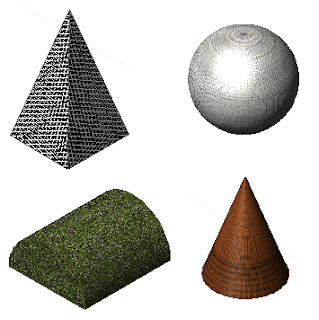LINE
- A line is the connecting of two or more points.
- It is the fundamental stroke first made.
- Combined lines can form shapes or an image easily recognize.
- Lines, depending on it's thickness, mass, and the way it's drawn can show movement, direction, show different textures as well as patterns.
- Lines created the outer line of and image. It is sometimes the base of an image.
- There are straight, curvy, horizontal, vertical and squiggly lines.
SHAPE
- A shape is is a line that is closed. It is the area in the closed lines.
- Every object is made out of shapes.
- Shapes can come in many forms and sizes.
- Pentagon, Square, Circle and Triangle are all examples of shapes.
Color
- There are 3 primary colors; Red, Blue and Yellow.
- Secondary are the mixture of two primary colors.
- Colors gives the picture a meaning. It can show the viewer the temperature of the picture, the intensity of the picture. In fact, color can tell you the era of when the picture was taken or drawn.
- Colors are important and it has a guide on which color to mix with which as well as when to use which color.
 |
| Source |
- Tone is the lightness and darkness of the object, image. Light can be bright and clear. Dark can be the shadows.
- Tone can give and image it's solidness, the weight and also it's volume.
 |
| Source |
Texture
- It is the surface you can either see or touch.
- It can be rough, spiky, velvety, regular, irregular or smooth.
- Added to make the object more special in terms of looks and feel.
 |
| Source |
Direction
- Is the way the picture is drawn that your eyes automatically follow it from point A to point B.
- The direction can be from top to bottom, left to right, upper slope to lower slope .
- The direction can show the speed of the movement.
- Balance directions give stability whereas imbalance directions give tension.
Perspective
- Is the way a picture is captured. It is the angle taken so that the viewer sees the picture from one point of view.
- It helps give a depth and insight to the viewers into understanding the picture or image better.
Size
- Is the big or small of an object or area.
- Size can help give space, show power and importance.
Mass
- Helps indicate how heavy an object is.
- It can show the amount of material in any sculptural works.






No comments:
Post a Comment